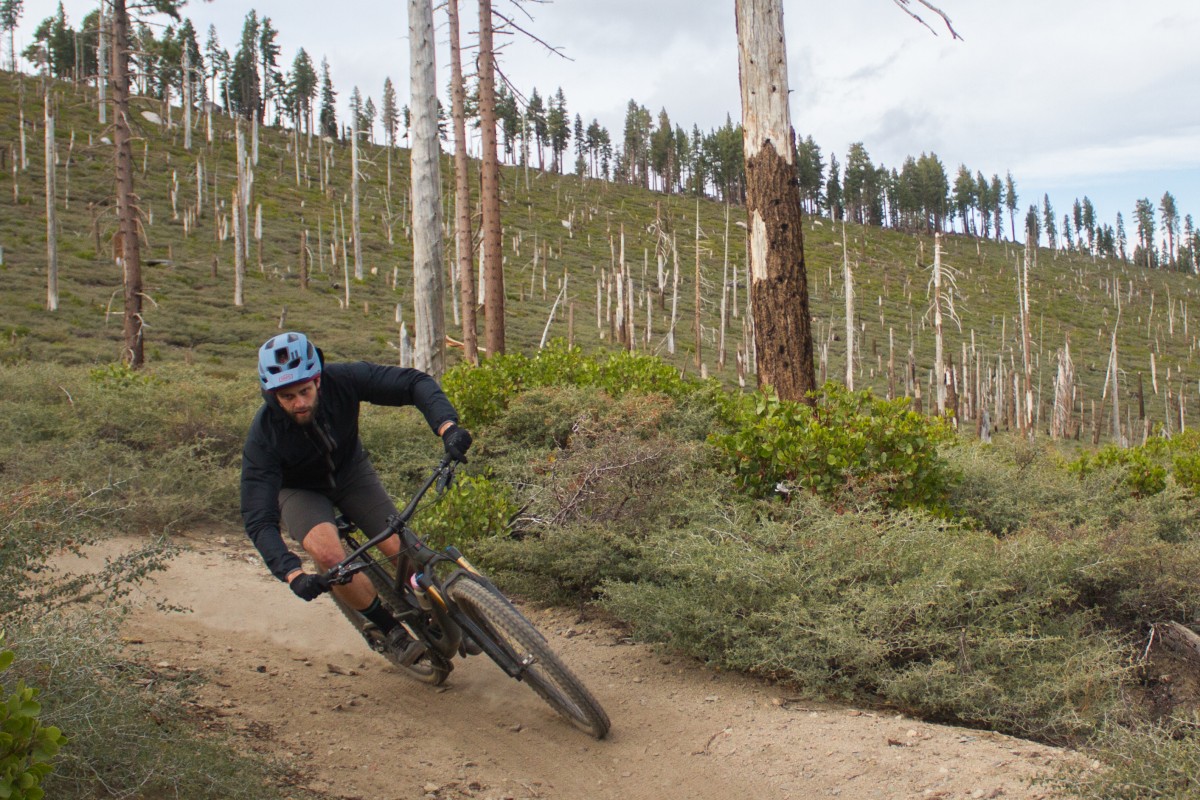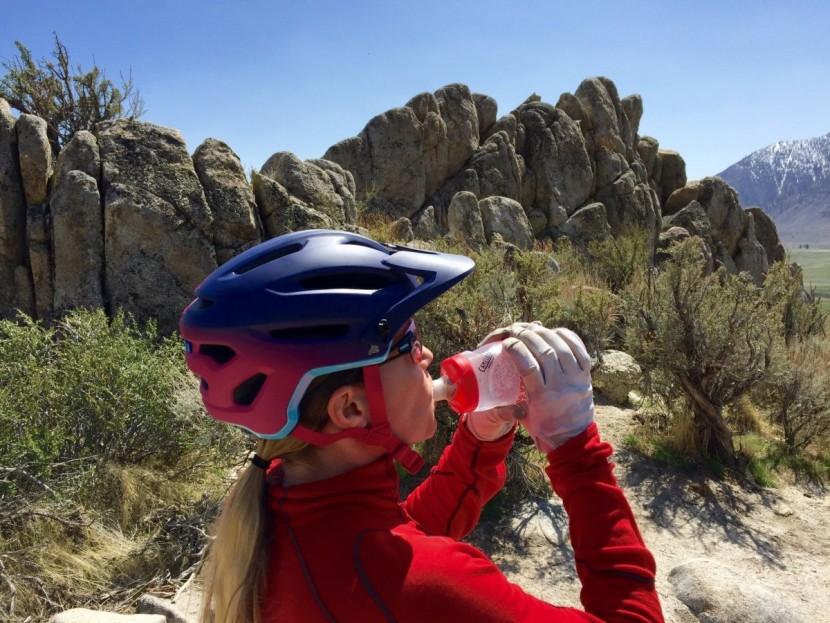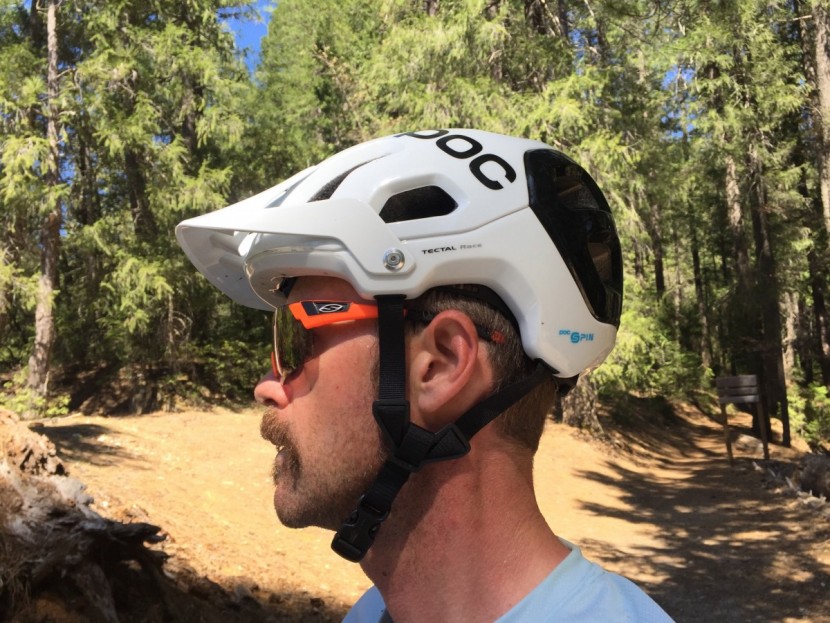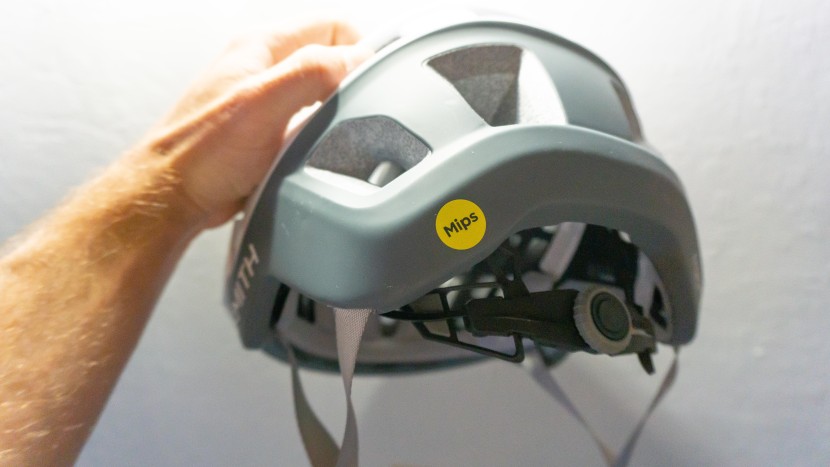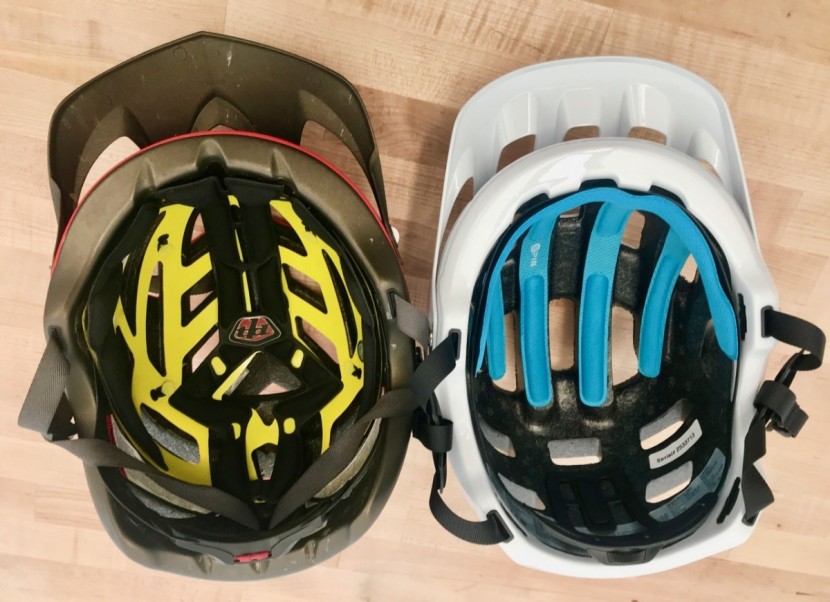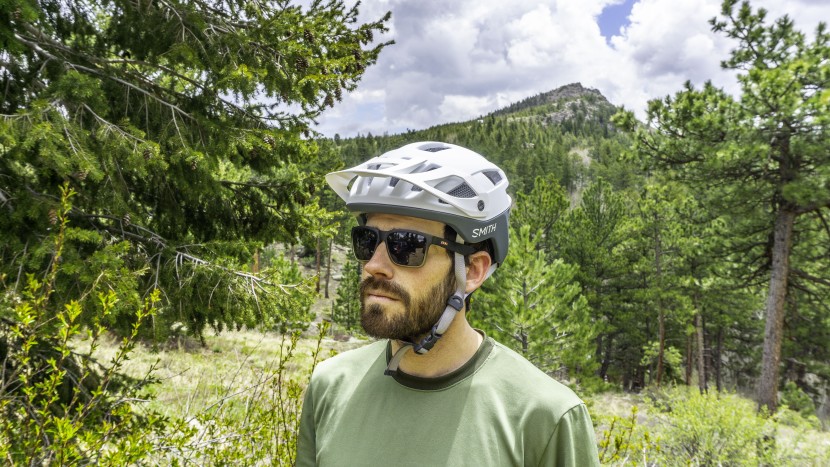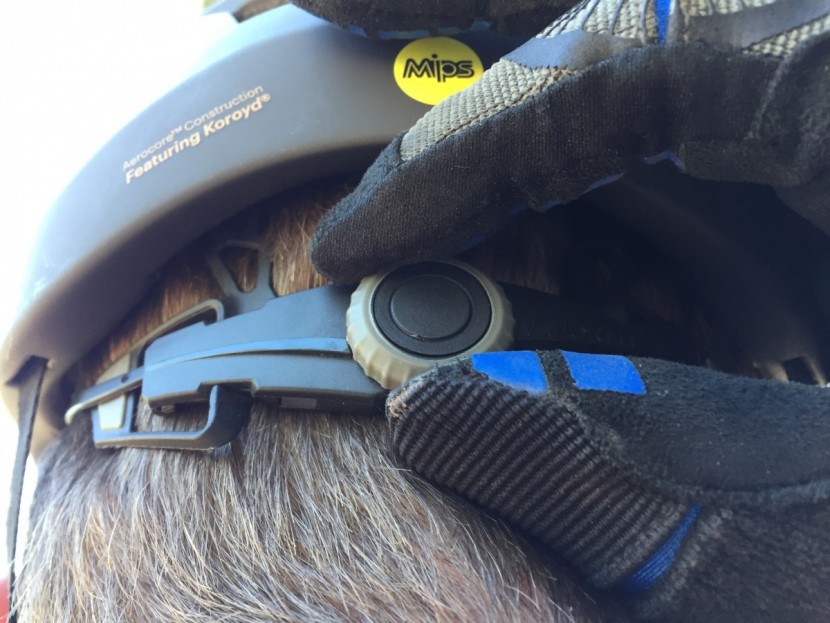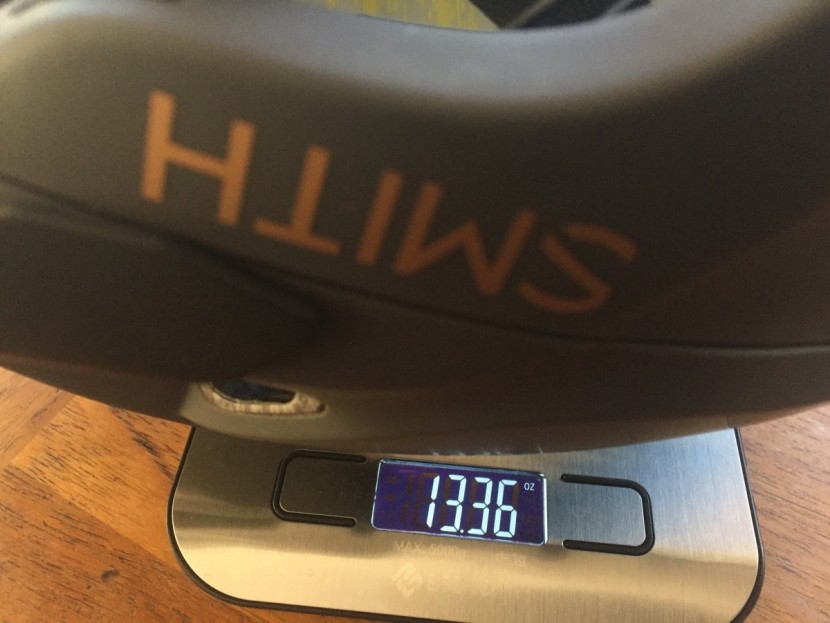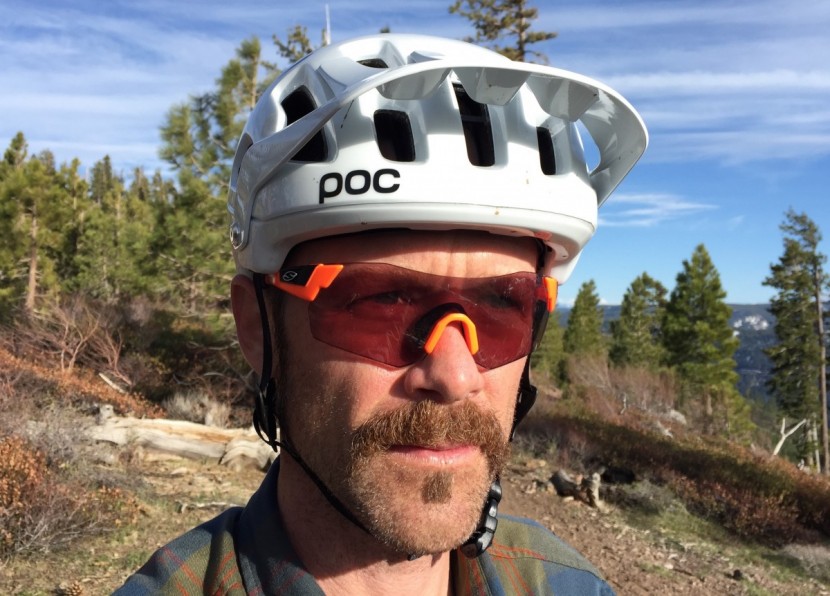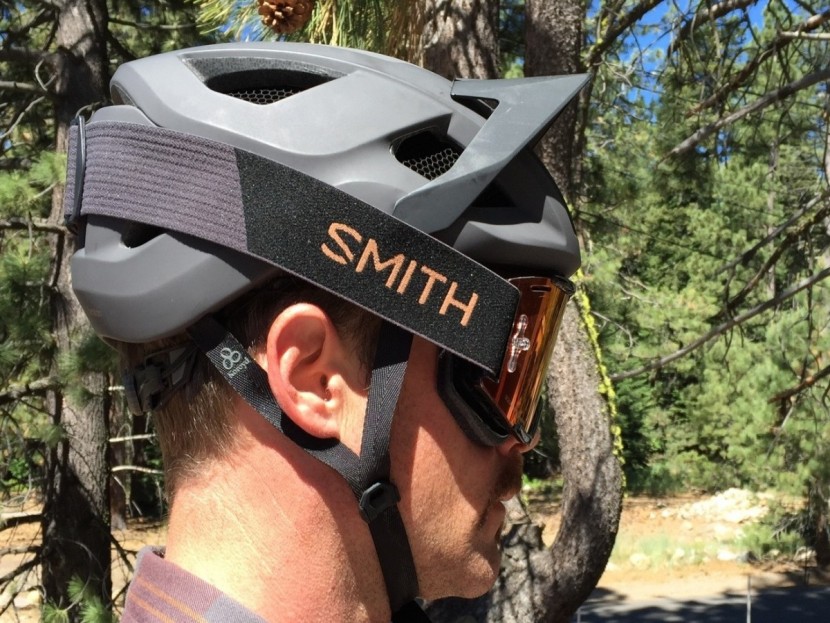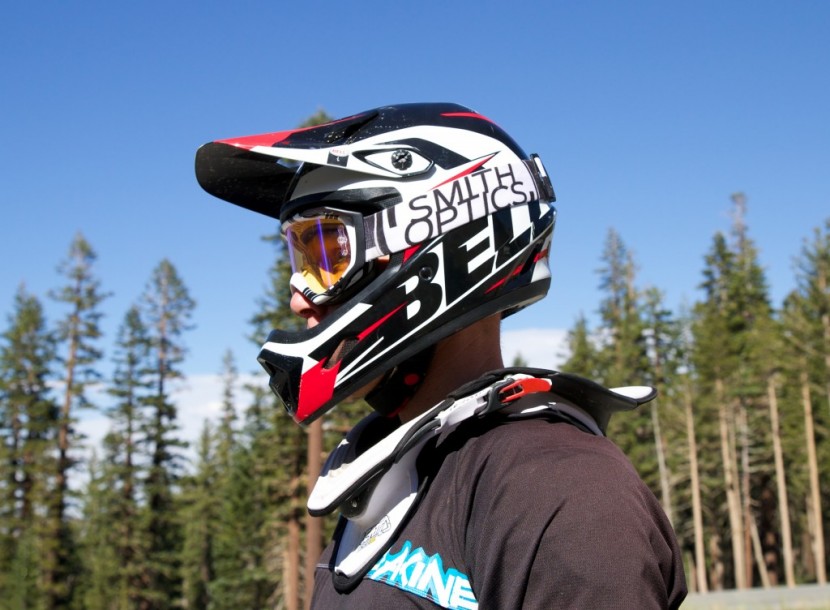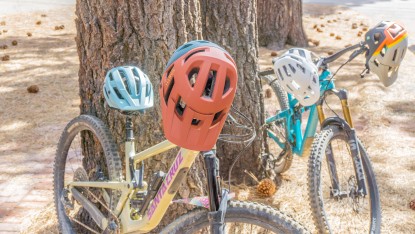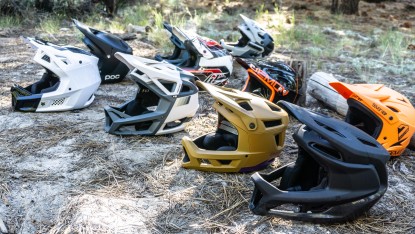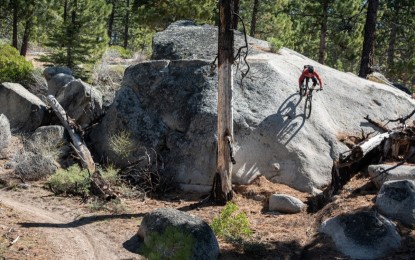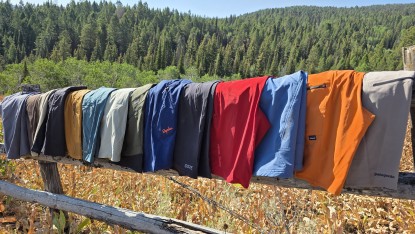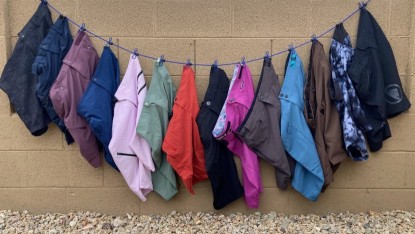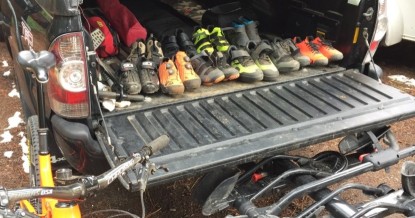Shopping for a new mountain biking helmet and not sure where to start? There are many different types of bike helmet available on the market today, from lightweight models that favor pedal-intensive rides to heavy and robust options for technical downhill biking. Continue reading to learn more about the categories of mountain bike helmets and which options are best for your first, or next, helmet.
Mountain Bike Helmet Categories
First, you can divide mountain biking helmets into two basic categories — full-face and half-shell. The differences are exactly what the names imply. Full-face helmet models provide full coverage of the head, including a chin and face guard, which wraps around the front of the helmet for additional protection. Half-shell helmets offer less protection and coverage than full-face models, covering the top of the head, partial areas above/alongside the ears, and the back of the head.
Cross-country, trail, all-mountain, and some enduro riders will generally wear half-shell mountain bike helmets. In contrast, more aggressive downhill, enduro, and some bmx riders will typically opt for a full-face model. Of course, you can wear any mountain bike helmet for any type of mountain biking, some are just better suited to specific disciplines than others. This article focuses primarily on half-shell mountain bike helmets, which have more subtle differences.
Half-Shell Mountain Bike Helmets
Half-shell mountain bike helmets are appropriate for the vast majority of mountain bike riders. It's one of the most versatile styles of helmets and works for road biking, commuting, lapping the pump track, and trail riding. Half-shell mountain bike helmets are similar in many ways to road bike helmets, although modern models typically have a visor and more coverage than their road-oriented counterparts. The best half-shells these days have extended coverage for the sides and back of the head, a versatile range of fit, a rotational impact protection system, and an adjustable visor. We evaluate the helmets in our review based on several criteria, including impact testing, comfort, ventilation, useability, and features.
If you're looking for a helmet that's better for all-day pedals, we'd suggest a model that's lighter and lower profile. If you're seeking an option that favors more enduro/downhill riding, something that's a bit more durable and generally heavier is worth considering. However, most shoppers will be happy with an all-arounder option that's at home on the downhill or on long cross country grinds. Fortunately, our mountain bike helmet review offers a comprehensive list of top-notch models for a wide variety of needs.
Protection and Certifications
A helmet's most important function is to reduce the likelihood/severity of a head injury in the event of a bike crash. Fortunately, every single helmet that is (legally) sold in the U.S will have a certification from the Consumer Product Safety Commission (CPSC), which means a helmet has passed rigorous testing and has met, or exceeded, certain standards. You'll also likely see a CEN / EN 1078 certification on many helmets, which is simply the European helmet standard. Here at GearLab, we've partnered with the ACT Lab to conduct our own impact testing to offer you more information and to ultimately ease your decision making. Read about our impact testing in our how we test article to learn more.
Mips and Rotational Impact
Rotational impact protection systems have also been growing in popularity in all types of mountain bike helmets. Mips, which is commonly branded on the outside of a helmet, is the most popular option and this system features a slip-plane liner integrated into the helmet design between the foam and the pads of the helmet. The idea behind it is that the Mips liner shifts in the event of an impact to reduce the rotational forces on the brain. Mips is currently the most common type of rotational impact protection system, but some manufacturers have developed their own proprietary design to achieve similar protection.
Each of these new rotational impact systems is aimed at reducing the g-forces applied to your head in an impact, but they all approach it in a slightly different way. Mips uses a plastic shell on the interior of the EPS foam that can slip and rotate within the helmet on impact. Other systems like 100%'s Smartshock, Kali's LDL, Leatt's 360 Turbine, POC's Spin, and 6D's ODS use shock-absorbing inserts in the helmet that tout both impact absorption and leeway for rotation on indirect impacts. Even among these systems, however, there are varied approaches. 6D's system is quite unique in that the shock-absorbing inserts sit between two separate EPS shells while all the others feature inserts between the EPS shell and the helmet's interior padding. Beyond these systems, Bontrager's WaveCel is a layer of a porous, cellular structure that they claim works like a crumple zone to absorb forces from direct impacts and work like a slip-plane in an oblique or rotational impact.
Proper Fit
For a mountain bike helmet to function properly, you have to get the right size. Mountain bike helmets come in several sizes measured in centimeters. To figure out your head size, measure the circumference of your head using a flexible measuring tape. Go completely around your head on a level plane, beginning and ending just above your eyebrows. Don't have a flexible tape? Just use a piece of non-stretchy string and then compare it with a rigid measuring device. In general, each helmet size is intended to fit a range of head sizes. For example, a size medium Smith helmet fits 55-59cm head sizes. Make sure your head measurement falls within the size range of the helmet you order.
The fit of a helmet is also dictated by its adjustments. Adjustable features like the straps and the fit adjustment on the back of the head allow the user to dial in the fit to their exact preferences. Straps are typically adjustable under the chin and also where they split below the ears. Adjusting the straps allows the user to set them up perfectly for their head shape and size and to achieve proper tension so that the helmet stays on your head in the event of a crash. Most modern helmets also have a size or fit adjustment on the back of the helmet to tighten or loosen the fit within a specific range. Since the helmet shell doesn't have a perfect fit for each person's head, the fit adjustment allows the user to dial in the appropriate snugness for their cranium. These days, the fit adjustment is usually in the form of a dial that pulls tension evenly from both sides and cradles the head at the bottom of the occipital lobe.
In addition to proper fit, a helmet must also be worn properly to function as intended. This means the helmet is level on your head from front to back, and the front pads/sweatband should sit just above the eyebrows around the middle of the forehead. The rear fit adjustment should be tightened so that it is snug (hopefully, you started with it fully loosened) by turning the wheel or sliding the sliders until the helmet feels secure on your head. You also must adjust the strap harness so that the helmet will stay put on your head even in the event of an impact. We've found there is a fine line between a properly tightened chinstrap and one that is uncomfortable.
Weight
In cycling everything is subject to weight scrutiny, and helmets are no exception. The half-shell mountain bike helmets we tested weigh between 350 and 515 grams. Cross-country racers or especially weight-conscious riders may be more inclined to find a super lightweight helmet, and sometimes they will trade coverage for weight savings and opt for a road bike style helmet or XC race-specific model. Others will find minor weight differences to be effectively hard to notice.
Ventilation
Half-shell helmets are all designed with ventilation in mind. The vents of a mountain bike helmet are typically in the form of large ports in the outer shell and foam liner that allow air to flow directly to the head. Many helmets also incorporate air channels that allow the air to flow over the head from front to back to further enhance the ventilating properties of the helmet.
Not all ventilation systems are created equal, and some helmets keep your head much cooler than others. Interestingly, we've found that a helmet's ventilation is not directly related to the number of vents that it has; instead the effectiveness is more related to the placement of the vents and overall design of the system. If you live and ride in an especially hot area, you'll probably be happier and more comfortable with a helmet that has better ventilation. If you live in a cooler climate, then ventilation may be less of a concern, but even in the cold, it can get a little bit steamy on a long climb, and you'll still appreciate good ventilation.
Features
Half-shell helmets are being designed with more features to enhance your riding experience or improve their protection. Examples of these features are adjustable visors, rotational impact protection systems, goggle clips, ventilation, GoPro and light mounts, crash detection sensors, and ways to hold your sunglasses when not in use. Features are great, but only as long as they are actually functional and useful while out on the trail. Overall, we believe that a rotational impact protection system is a great feature to have that may enhance your protection. The price of these systems has come down over the years, and nowadays it only costs a few dollars more to get a helmet with Mips or a similar system. We feel it is worth the extra money.
Visors are a feature on virtually all-mountain bike helmets. Visors are designed primarily to block the sun from your eyes, although many are adjustable for goggle compatibility. If you like to ride with goggles, you'll want to be sure to get a helmet with an adjustable visor that flips up and out of the way far enough so that you can rest your goggles on the front of the helmet when not in use. If you never ride with goggles, then a fixed visor may work just fine for you.
The features offered by each helmet varies from model to model, and each helmet's features are described in greater detail in their individual reviews. Some helmets pour on the features while others stick to the basics and execute the traditional design as well as they can. We found that there's a fine line between well-executed features and ones that feel like pure marketing gimmicks.
Conclusion
The bottom line is that, just like everything else that's fun, riding a bike can be dangerous, and a helmet is the most important piece of protective gear you can wear. No matter what helmet you decide to go with, wearing one is always a good idea. Hopefully this guide helped point you in the right direction for your next helmet purchase.

